Riding horse breeds

The domestication of riding horses
At the beginning, humans began to domesticate the horse to use it as food, but then they noticed that it could help with their development and began to use it in agriculture, pulling the plough, and as a means of transport over great distances.
Horses were also used as a fundamental ally in wars, for example in Europe and Asia, where many of the great empires appeared thanks to horses, which allowed them to reach the confines of their territories.
This did not happen in America, where the Inca, Aztec and Maya empires covered small territories because they had no horses and travelled on foot.
As a result of these activities, much more valuable than the use of horse meat as food, a strong relationship between humans and horses, which has lasted to this day, began to be forged..
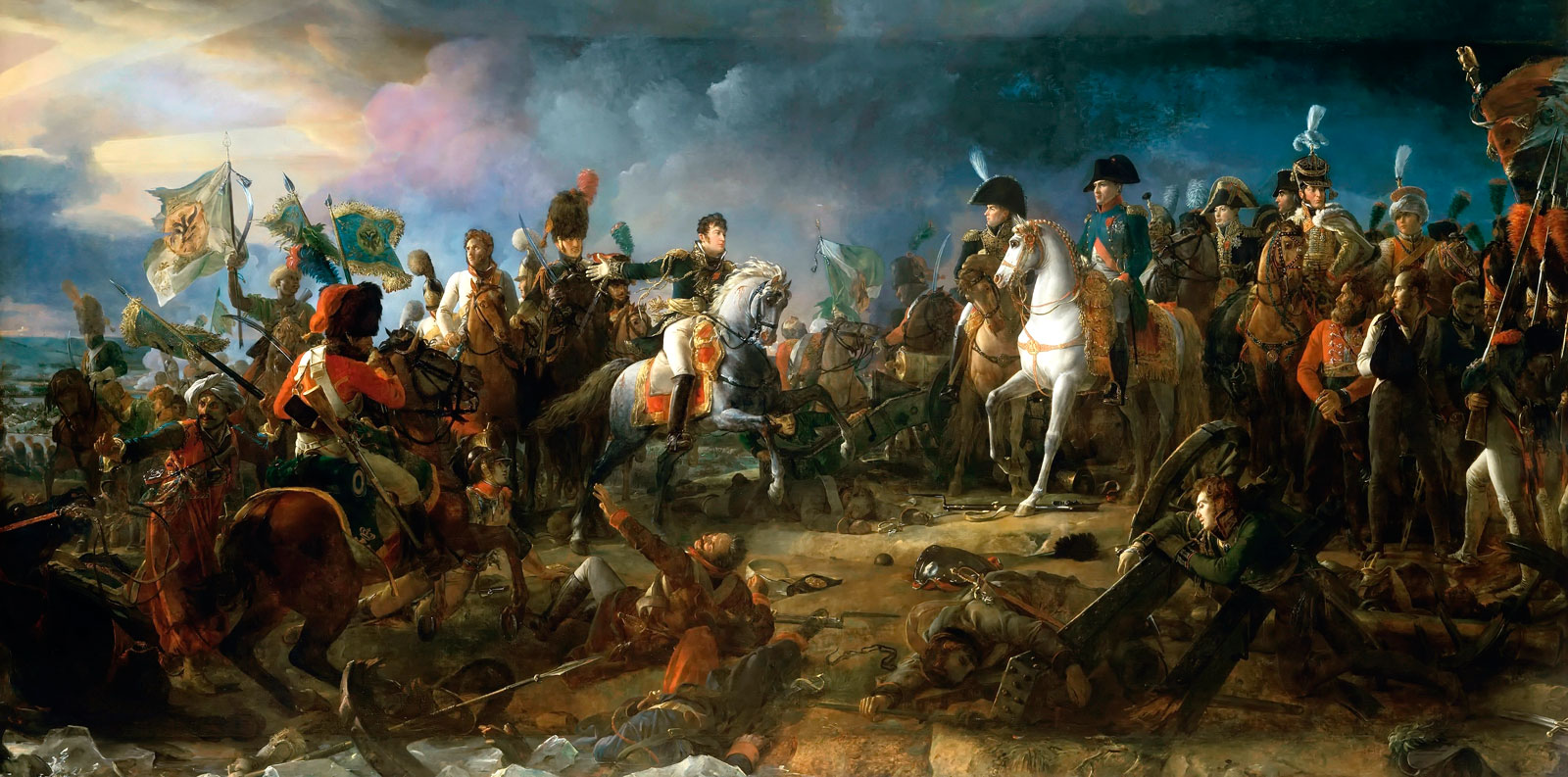
Napoleonic battles - Austerlitz
The breeds were moulded by humans for specific purposes - pulling, carrying loads or riding, either for transport or war.
These breeds were not only developed in terms of artificial and utilitarian selection, but also according to different ways of taming and training.
Differences between hot-blooded and Cold-blooded Horse Breeds
While all horses, both riding horses and draft horses, are hot-blooded mammals.
To make a differentiation based on their functions and characteristics, in the equestrian jargon of horsemanship the colloquial expressions began to be used “hot-blooded horses” and “cold-blooded horses”.
Those horses meant for riding were called hot-blooded horses, in reference to the smartest, fastest and most spirited horse breeds.
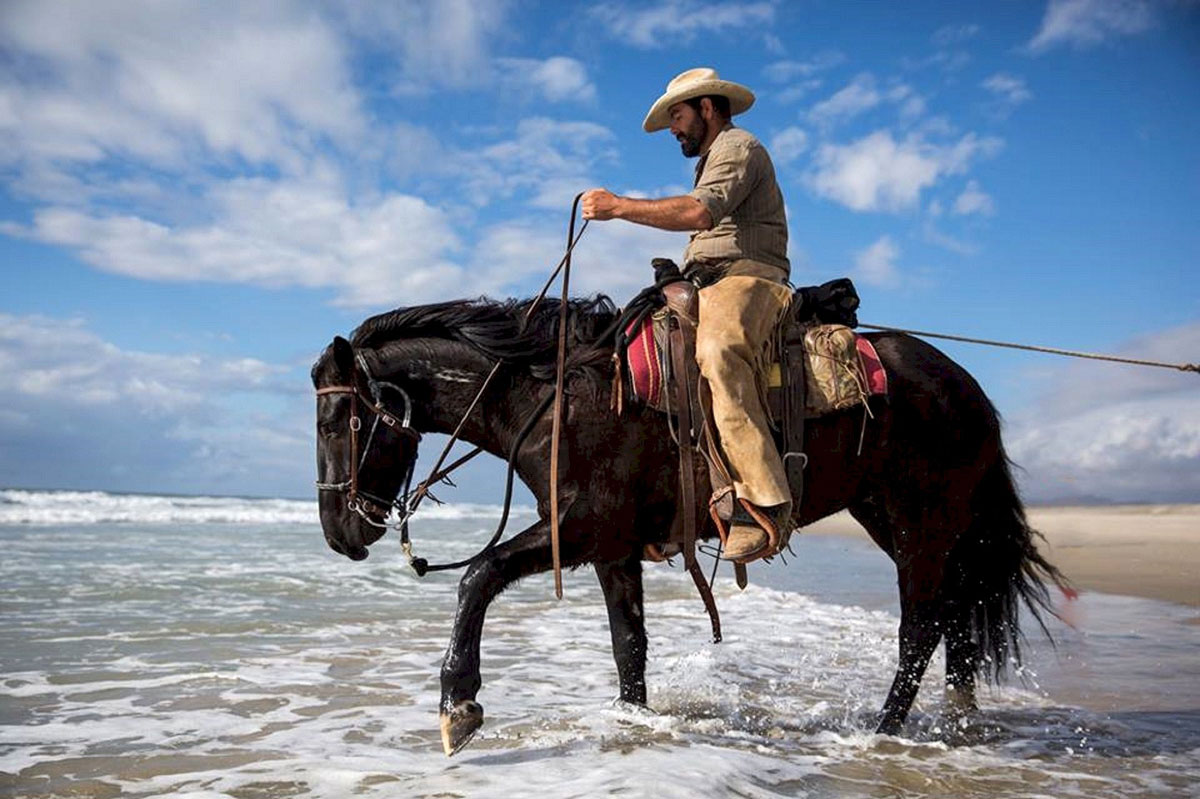
On the other hand, those horses meant for pulling loads, which were slower, heavy bodied and extremely muscular, were called cold-blooded horses.
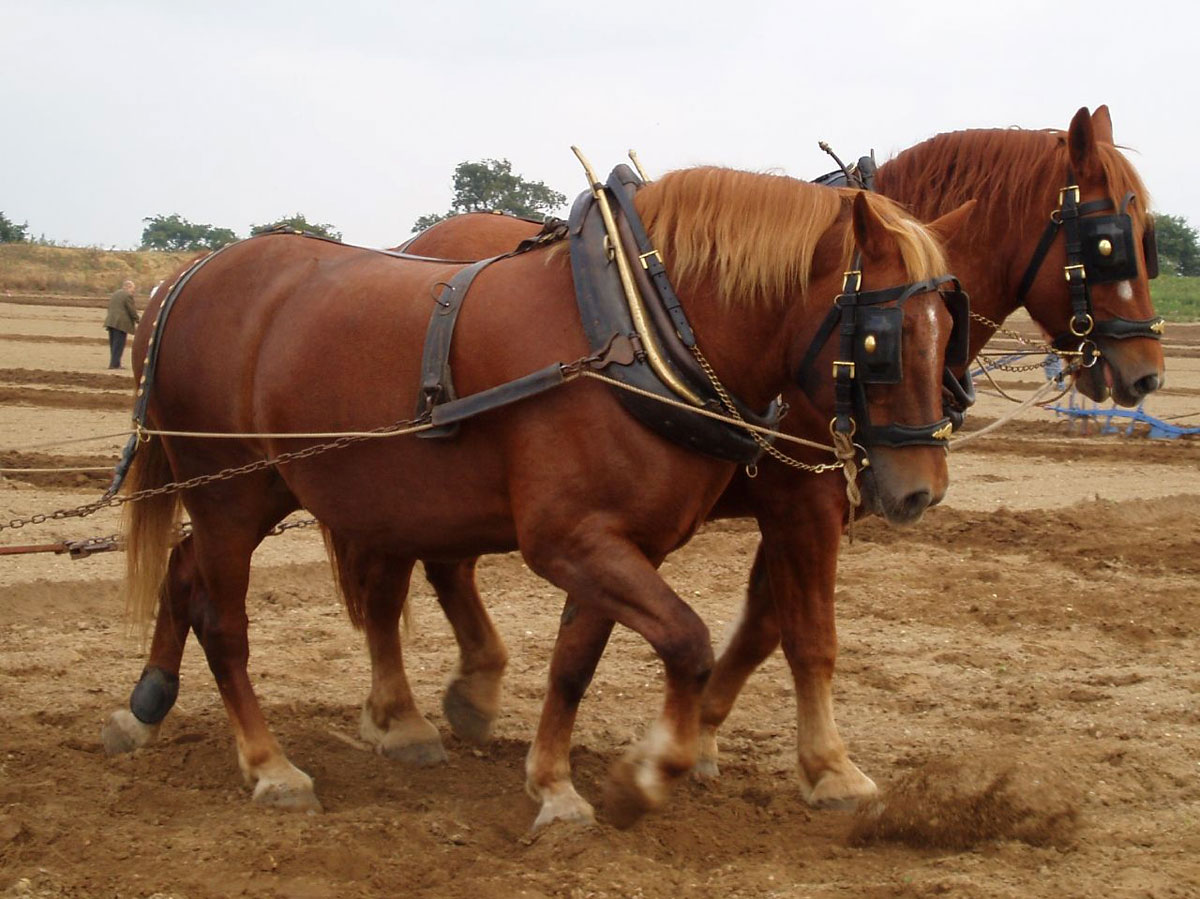
Characteristics of a Good Riding Horse
The characteristics of a good riding horse have changed over the time according to its different uses.
In the thirteenth century, a good riding horse was one with flattened and moving shoulders. If the chest was too prominent or the front limbs were inset backwards, that was considered a defect.
F. Minot recommended that riding horses be strong, tough, energetic and with solid limbs, in addition to having a smooth trot and being light and agile in their different walks and movement.
When the horse began to be replaced by the power of engines, in both war and transport, back in the early twentieth century, it was the time when riding horses were bred and selected for sports and recreation, and therefore, its constitution, gaits and character were selected to that end.
Functional qualities for equestrian sports, such as greater suppleness and agility, good musculature and stronger ligaments, were preferred at this time. In this way, they could better cope with physically demanding sports.
On the other hand, in those horses intended for recreational activities greater resistance to travel long distances was sought. A calm and friendly temperament was also promoted, avoiding horses with anxiety or behaviour problems and choosing the ones that offered a pleasant experience to the rider.
Riding Horses
The characteristics of riding horses make them suitable and adequate for a person to ride.
The Thoroughbreds and the Arab Horses were selected and adapted the most for riding, as well as many of the horses that were crossbred with native, strong and heavy mares.

Thoroughbred
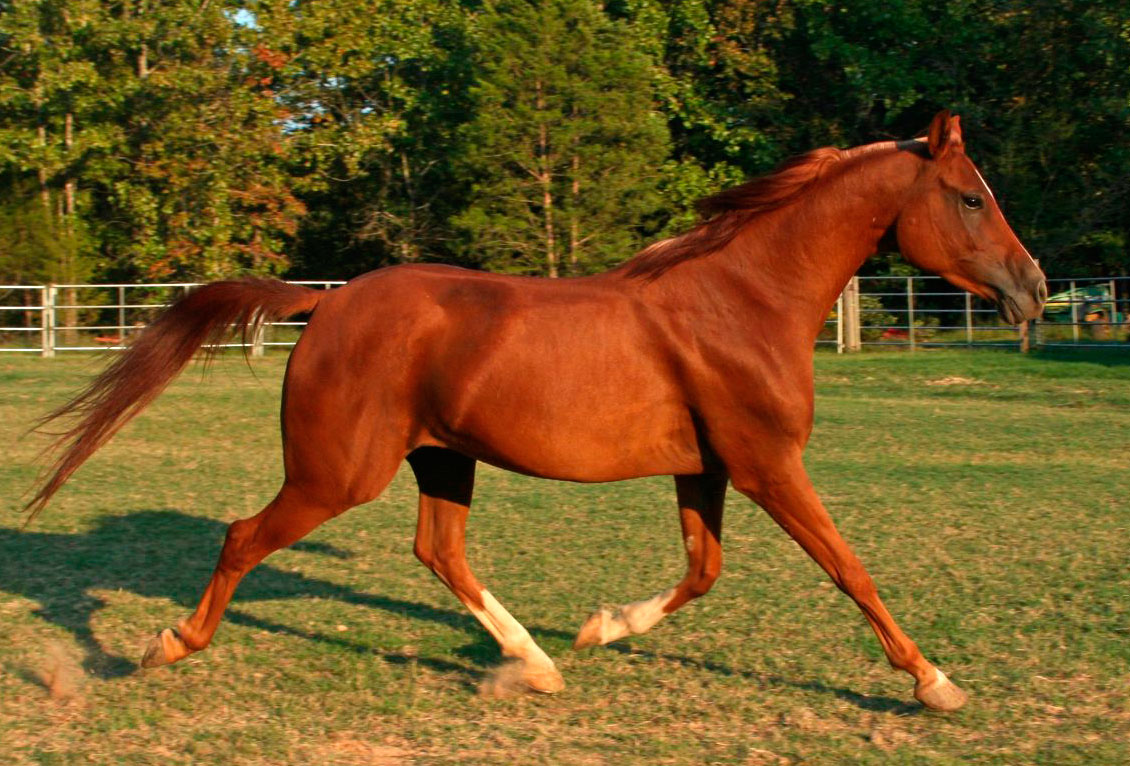
Arab Horse
Currently, there are also riding breeds belonging to different countries, as is the case of the Icelandic horse, considered a cold-blooded breed, which would be quite far from the European riding horse standards, but it is an excellent riding horse.
This group of native breeds includes our beloved Peruvian horses, which meet the best riding conditions thanks to their smooth ride.
Would you like to be part of a group with an equestrian soul?
Join the Ampascachi Community. Obtain exclusive benefits for your holidays.
We tell you how to start, train and take care of your horse.
Interviews with direct providers of riding tours around the world.
Opinions of outstanding equine scientists and personalities in the equestrian sport world.
Most popular riding horse breeds
Today, there are more than 160 breeds of riding horses, pony breeds not included.
We will now describe the main characteristics of the most popular riding breeds.
Foundation Breeds
While there are other purebreds, the two most popular breeds are, undoubtedly, the Thoroughbred and the Arabian or Arab Horse.
Today, these two breeds continue to be pure and are still contributing to the improvement of other horse breeds, in addition to being used as riding horses in sports as well as in horse riding or equestrian routes.
THE THOROUGHBRED HORSE
Thoroughbreds werebred for their speed and have always stood out in horse racing, outracing the Andalusian horse, which has been considered the fastest breed, together with the Berber horse, since Roman times.
On the origin of the Thoroughbred, there are different opinions, but it can be said that it descends from a small group of stallions imported from North Africa and the Middle East to England at the beginning of the 18th century.

There is little information about the mares, although it seems that a large part of them had the same origin as the stallions.
For a century, the population remained very small, since horse racing was limited to the court.
As from the 18th century, horse races became more popular and in 1791 the Stud Book was proposed, which in its 5th edition (1891) includes the list of the oldest known females (80 animals) considered as founders of the current population.
The most important founder stallions were:
- Darley Arabian, born in Syria and considered to be the regular predecessor of racehorses and a leading figure in the Stud-Book.

Darley Arabian
- Godolphin Arabian, of Berber origin, was a horse with a conical head, thin limbs and narrow hooves.

Godolphin Arabian
- Byerley Turk, brought from Serbia.
- Curwen Bay of Berber origin.

Byerley Turk
These four stallions provide a third of the genes of the current population.
Thoroughbreds are bred throughout the world, with a highly specialised breeding and handling regime, andits selective breeding process is extremely demanding.
There is not such a thing as a Thoroughbred standard, since special attention is paid to the purity and quality of its origins, as well as to its performance in races.
Their multiple origin gives them morphological heterogeneity, particularly in size. Some of them remind us of the Arab breed because of the size, the shape and tissue sensitivity, while others have the gait of “half-bloods”.
In principle, we could say that they are eumetric, orthoid and longilineal, but it is a breed with large fluctuations, and there are some specimens that comply with the hypermetrics, even though they are sub convex and even ultra-longilineal.
For that reason, it is said that a horse is Thoroughbred when it is enrolled in the Stud Book of the Thoroughbred.
Characteristics of the Thoroughbred Horse
- In general, we can point out that its height at the withers is between 1.60 and 1.65 m, and its weight between 400 and 500 kg.
- The head is medium-sized, long, lean, with hardly any subcutaneous fat and thin skin. Of straight profile, wide and straight forehead, medium-sized to long, separated ears, straight nasal cavity, open nostrils and square muzzle, well-defined jaw.
- Long, straight, pyramidal and narrow neck with shallow insertion in the head and trunk, with which it forms an angle of about 45º.
- Very prominent, long and narrow withers, long thoracolumbar line and slightly raised towards the hindquarters.
- High croup, with a variable inclination according to the use, with high set and flat tail, low hips.
- Deep chest, ribs are little arched and very deep, picked up belly.
- Long limbs with open angles.
- Long and sloping back, oblique front leg, short cannon bone, small hooves and generally of bad constitution.
- Regarding the coat colours, bay is the most common, followed by chestnut and grey. The rest of the coats together does not exceed 1%.
Although this horse is used mostly in races, we can say that it can also be used to ride in the field if it is properly tamed and trained.
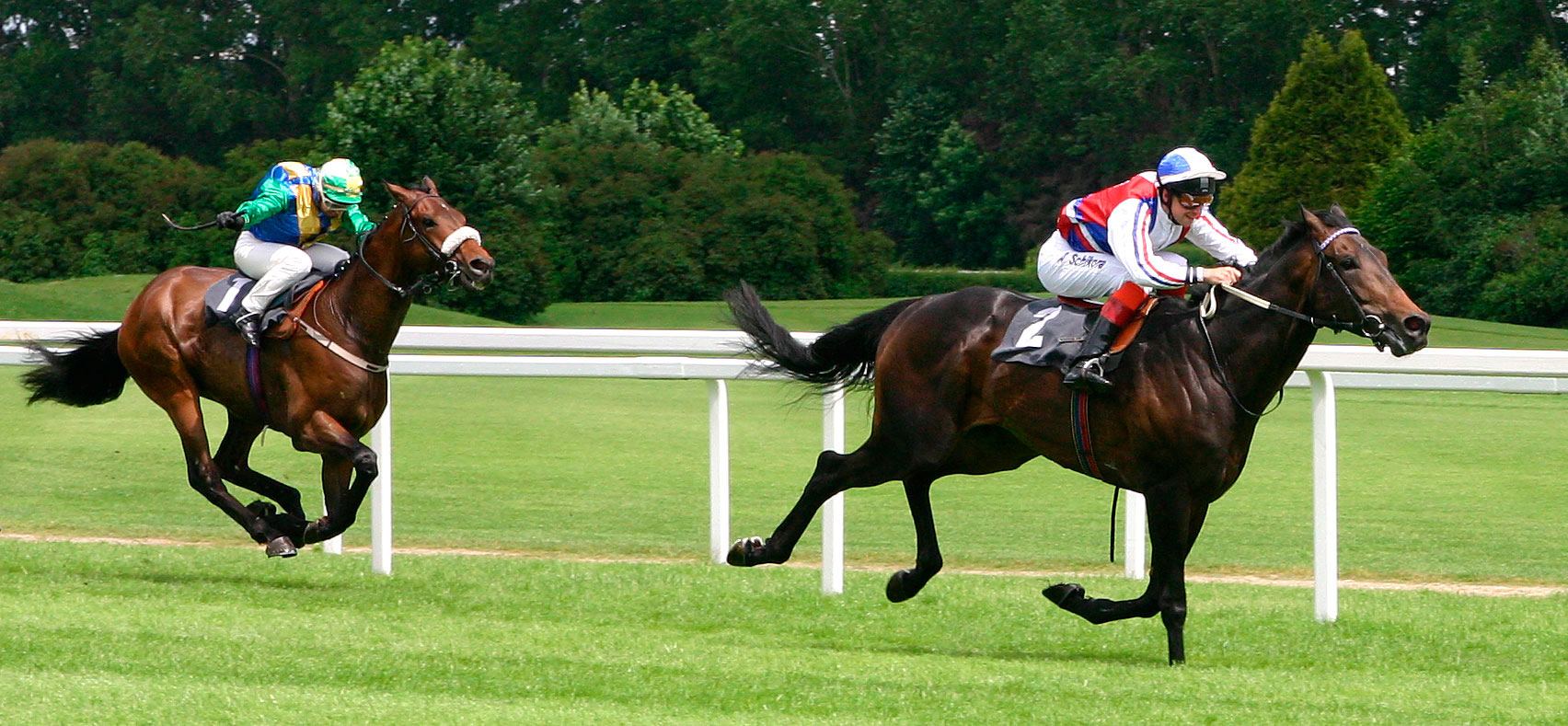
THE ARAB HORSE
The origin of this horse is not very clear, there are some legends, but it is known that it is one of the oldest breeds.
There are archaeological evidences of 4,500 years ago of horses similar to the current Arab, and that it developed in the deserts of the Middle East and from there it spread to the rest of the world due to trade and wars.
They have had as their masters the Bedouins, this closeness with humans generated a breed with a good disposition and quick to learn, but they also developed a spirited and attentive horse, able to carry out war assaults.
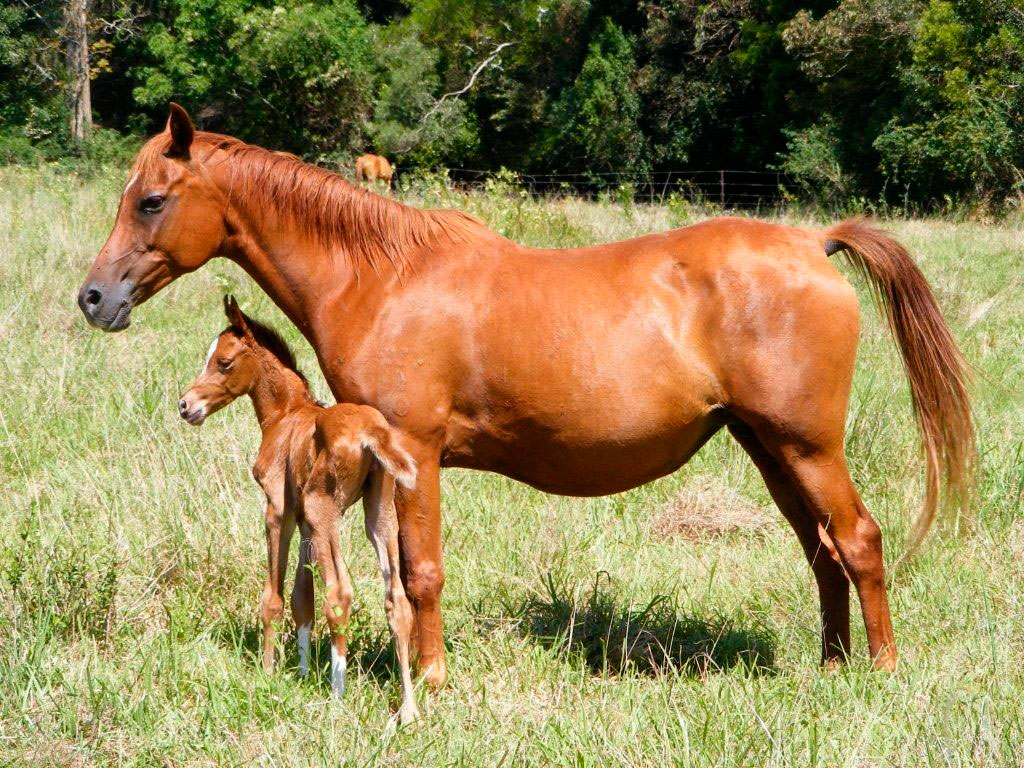
The Arab horse is considered one of the 10 best breeds in the world and it is used for different purposes such as endurance races one of the main purposes.
The Arab horse represents speed, resistance, refinement or beauty, and a very good bone structure and, for this, there are three lines, each representing one of the three first attributes mentioned and all of them share the fourth one – good bone structure.
Characteristics of the Arab Horse
- Arab horses of good lineage have deep and well-angled hips, and shoulders with good fall. Most have compact bodies with short backs.
- Some, and not all, have 5 lumbar vertebrae instead of the usual 6, and 17 pairs of ribs instead of 18. For this reason, an Arab horse can easily carry a heavy rider, even if it is small.
- The breed standard is fixed at a height at the withers of 1.43 to 1.53 m. Although this height brings it closer to the height of a pony, the Arab is considered a horse because of its physical conformation, regardless of its height. Some crossbreds that were made with them, managed to raise their height from 1.52 to 1.62 m.
- It is considered a hot-blooded horse because of its speed, agility, spirit and stylized muscles, and it has a great sensibility that allows it to learn very quickly what it is taught.
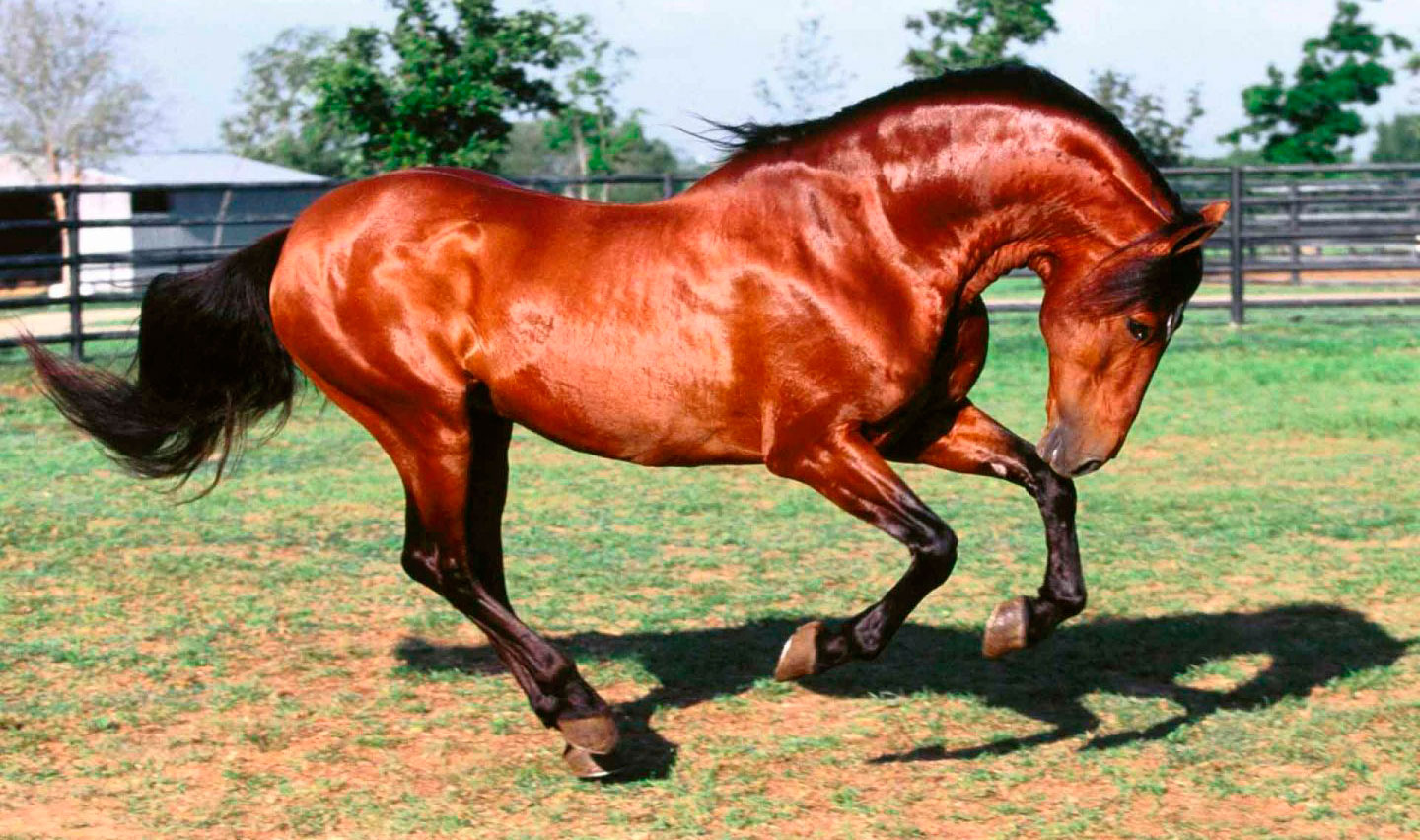
Because of its spirit and ductility, this beautiful horse is also used with great success in equestrian routes or horseback rides, in addition to many other uses. It is, undoubtedly, one of the best horses in the world.
Special Breeds Related to Horseback Riding
Here we will mention the Paso or gaited breeds that, in our opinion, are the ones that have a brighter future regarding equestrian routes or horse riding tourism, due to the comfort and smoothness of their ride and their resistance to travel long distances.
THE PERUVIAN PASO HORSE
This equine breed is native to Peru and it was present everywhere in the Viceroyalty of Peru, especially in what is now northern Argentina.
This horse arrived with the Spanish conquistadors, who brought horses from the Iberian Peninsula, which were a crossbred of the Iberian or Andalusian horse with the Berber horse from the north of Africa, whose ambling ability was passed on.
In this crossbreeding, the Andalusian horse, which carried other bloods, such as the Frisian’s passes its bearing on to the Iberian horse, and the influence of the African Berber breed, is responsible for providing its smooth gait.

Ambling Gaits
Theambling is atwo-beat gait executed by the movement of the limbs of the same side (front and rear limbs of the same side).
Unlike the trot, a two beat gait, and which is present in almost all equine breeds, which is executed by the diagonal movement of the limbs (right rear leg with left front leg).
The gait of the two-beat amble produces an undulating movement, in the horizontal plane of the horse’s centre of gravity, as opposed to the two-beat gait of the trot that produces an undulating movement, in the vertical plane of the horse’s centre of gravity, although both gaits have two beats, the trot is much harder for the rider.
In the case of the Peruvian horse, selective breeding and the influence of geographic and climatic conditions in Peru improved the harmonious gait and gentle disposition that have become the characteristics of the breed. In this manner, the amble is broken in two parts.
Peruvian horses developed a gait called "paso llano". Instead of a two-beat amble, they can perform a smooth, isochronous four-beat gait.
This four-beat isochronous gait, which begins with the first movement of the rear leg on one side a few seconds before lifting the front limb on the same side, so that the first beat of the movement ends when the rear leg is set on the ground, a few seconds before the front leg is set on the ground, on the same side.
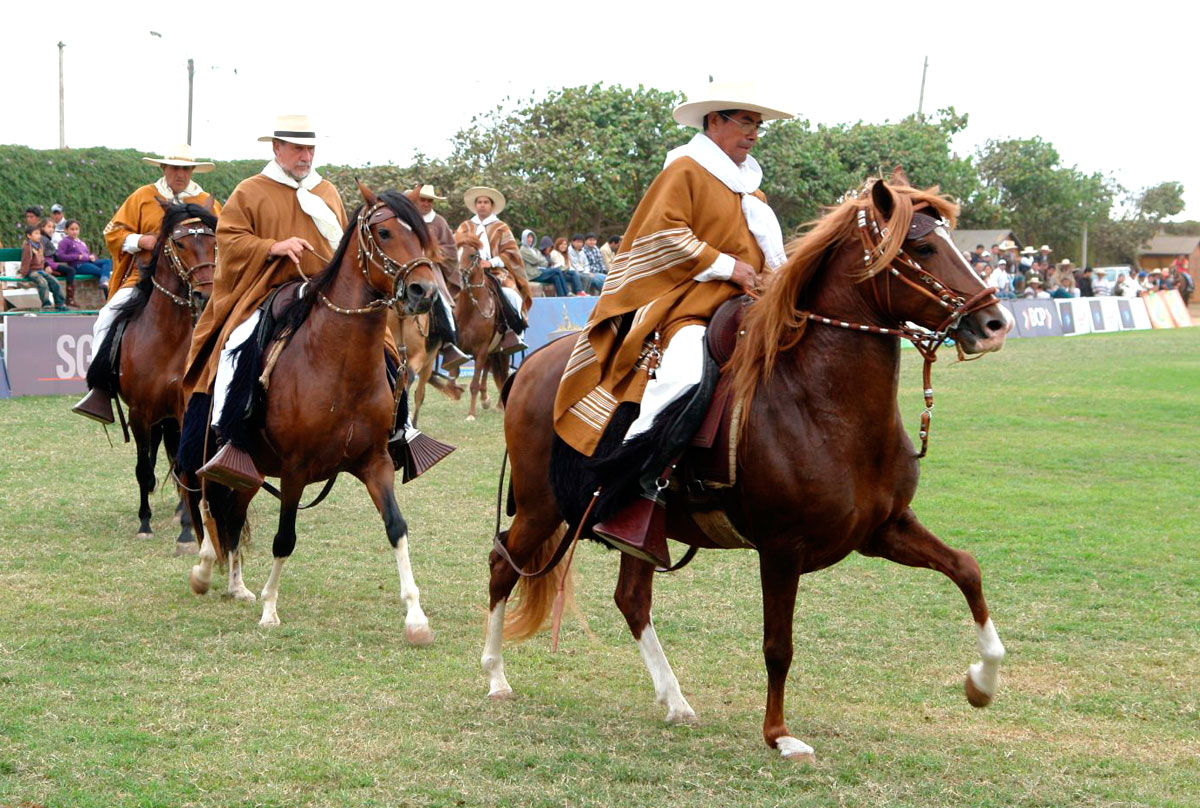
In this way, three limbs are on the ground in four, of the 8 sequences that this gait has so that the cycle is completed.
By breaking the amble and having three feet on the ground, the movement of the horse’s centre of gravity has imperceptible movements and this results in a soft ride.
All horse breeds move one leg at a time when they walk, with three feet on the ground. Similar to the one described, but perhaps with a little lack of synchronicity. This is why the walk is very comfortable for a rider with any breed, but they do it at a speed of 6 km/h. If the rider tries to hurry the walk, the horse develops the two-beat ride of the trot, which is diagonal and can go at 15 or 16 km/h.
Well, the Peruvian horse can keep walking at speeds of between 12Km/h to 18Km/h. That is to say, it can increase its speed without trotting.
Here in the following video, you can see some examples of “paso llano” and trot, with the 8 sequences of both gaits. Notice the movement of the horse’s back in each gait type.
This broken ambling gait or “Paso Llano” is a genetic feature that makes the horse work that way, it is not “taught” to walk like this, it does it naturally, when there is purity in the breed.
Of course, as all living beings it must be properly trained and tamed, so that it also improves its gait. But all its morphology and bony angulations are prepared for this.
Characteristics of the Peruvian horse's gait:
- Its smooth ride is due to the so-called paso llano.
- The breed has a natural “brío” – energy to react.
- It has a special beauty and style when gathered.
- Long strides in the paso llano allow for greater speed without excessive energy expenditure.
Thanks to all these features, trail riding on a Peruvian horse becomes a unique experience for riders. You can only understand that if you ride one.
While there are other Paso breeds, none compares to the Peruvian Paso Horse. That is why, as we see it, this is the best horse for equestrian tourism or horse riding routes.
Characteristics of the Peruvian Paso Horse
- We will say that it is a rather short horse, its height goes from 1.44 to 1.54 m at the withers.
- With a compact and muscled body, broad and deep.
- The limbs are long and strong.
- The head is flat and wide with bright and very expressive eyes.
- The neck is robust, muscled and well inserted.
- Its predominant coat colour is chestnut but there are also sorrel, dark bay and mixed coats, such as greyish and roan.
The Peruvian Paso Horse is the one that we put at your disposal in Ampascachi.
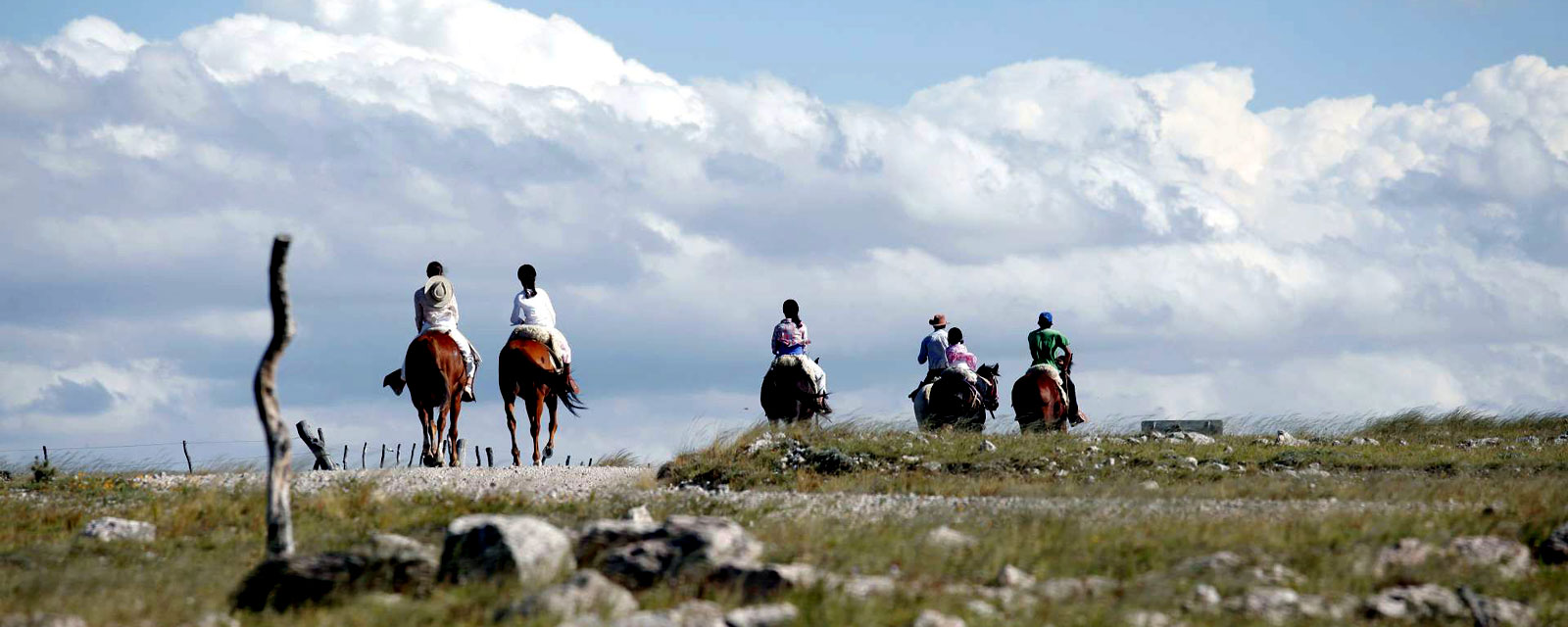
Do you want to know what it's like to travel on the back of these exceptional animals and experience their “paso llano”? Choose one of our horse riding holidays and then come and discover Argentina with us.
THE TENNESSEE WALKING HORSE
This horse, also known as Tennessee Walker, was developed in the southern United States and it is recognized as an ideal breed for all types of work, including ploughing.
The gait thanks to which the horse is known makes riding more comfortable for the rider.
The origin of this breed is in the American Narragansett Pacer and the Canadian Pacer horses. By crossing these breeds, breeders looked for a resistant animal, that could move easily and in mountainous landscapes.

At a later stage, a crossbred of ambling horses and national trotters was developed and it was called Tennessee Pacer which had a good ambling gait, although it was still very compact and rough.
From that moment on, breeders began to look for more refined but, at the same time, resistant horses. So, they decided to cross the Tennessee Pacer with Thoroughbred, Standerbred, Morgan and with American Saddlebred blood.
By 1885, they had a horse that met the requirements and that would be the basis of the breed.
Characteristics of the Tennessee Walking Horse
- Is a medium-sized horse with a long neck and a sloping back.
- The head is large, with refined bones, with small, well-placed ears.
- The horse has a long stride.
- The most common coat colours are black, chestnut and sorrel.
- Its height at the withers is between 1.50 and 1.60 m.
- It has a calm disposition and a great working capacity.
- His knees remain high at all gaits and it makes the ride extremely comfortable for the rider.
The Tennessee Walking horses have three different gaits the Flat Walk, the Running Walk and the Gathered Gallop or Canter. The Flat Walk and the Running Walk are four-beat lateral gaits, the second being faster and more extended than the first one.
Among the peculiarities of these gaits, we can mention that the lower body seems to move faster than the upper body, the suspended and elevated action of the front legs and the fact that the horse nods its head in rhythm with its gait.
It is a very good horse for trail or pleasure riding.
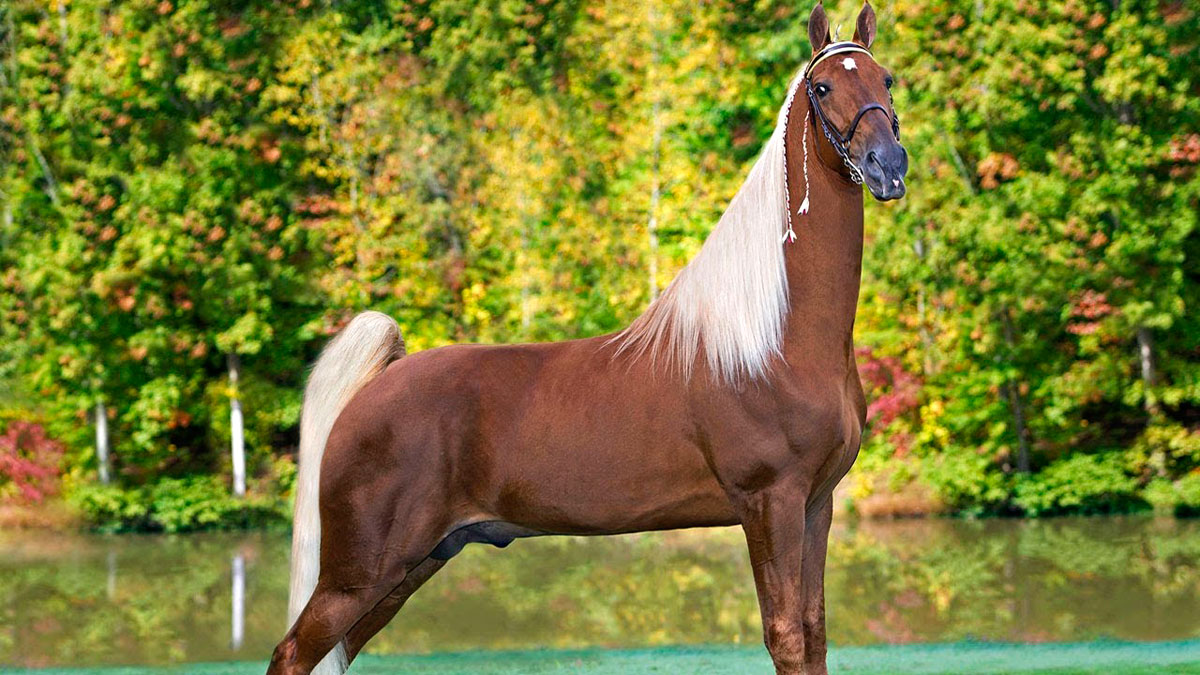
THE ICELANDIC HORSE
The Icelandic horse is the only native equine breed in Iceland, although it has spread to many parts of the world. Although it looks like a pony, it is considered a horse.
It is believed to have descended from the Scandinavian ponies between the 9th and 10th centuries. Its first references date back to the 12th century, when they were a cult object in the Nordic culture. It adapted itself very well to the extreme conditions of the island.

Characteristics of the Icelandic Horse
Despite being small (its height is between 1.25 – 1.45 m), it is very strong and resistant, and suffers a few diseases. Therefore, according to the Icelandic government, no horse is allowed to enter the country, to avoid bringing diseases and preserve the purity of the breed.
In fact, if a horse has to go abroad to compete or for any other reason, it cannot return to the country.
They are also very calm and brave, perfect for riding trails in Iceland.
This horse has unique abilities. Besides the walk, the trot and the gallop, it displays two other characteristic gaits - the Tölt and the Skeid.
- The Tölt is a variant of the trot in which the horse moves at high speed, moving the side limbs and always maintaining one of the limbs on the ground, which translates into greater comfort for the rider.
- The Skeid or Flying Pace, is a very fast pace with some horses able to reach up to 56 km/h. The flying pace is a two-beat lateral gait with a moment of suspension between footfalls; each side has both feet land almost simultaneously at great speed.
At present, this horse has aroused much interest in different parts of Europe and the US, where mares and stallions have been brought for breeding.

It is a very strong and resistant horse, whose gaits make riding comfortable. That is why it is ideal for trails or equestrian tourism.
Breeds related to horse routes
All breeds can be trained to ride in the open, some of them display better conditions for trails because of their calm predisposition, spirit and physical agility.
What is the difference between the horse’s temperament and brio?
The word temperament is commonly used to refer to those horses that can only be ridden by experts, since they are difficult to control, because they are very energetic and can scare a not very experienced rider.
But this situation relates more to altered and unpredictable behaviour, which results from “nervous energy”, and it depends on the way the horse was tamed or trained. In such cases, horses display bad behaviour because they were treated badly or tamed improperly.
Spirit, on the other hand, is thehorse’s predisposition to move, responding clearly to the aid of the rider. Spirit involves a “response with energy, agility and a quick but calm reaction”.
The horse moves decisively through narrow spaces or water courses, climbs a hill or goes down a slippery slope, etc. The horse’s breed and the way it was tamed and trained play an important role, too.
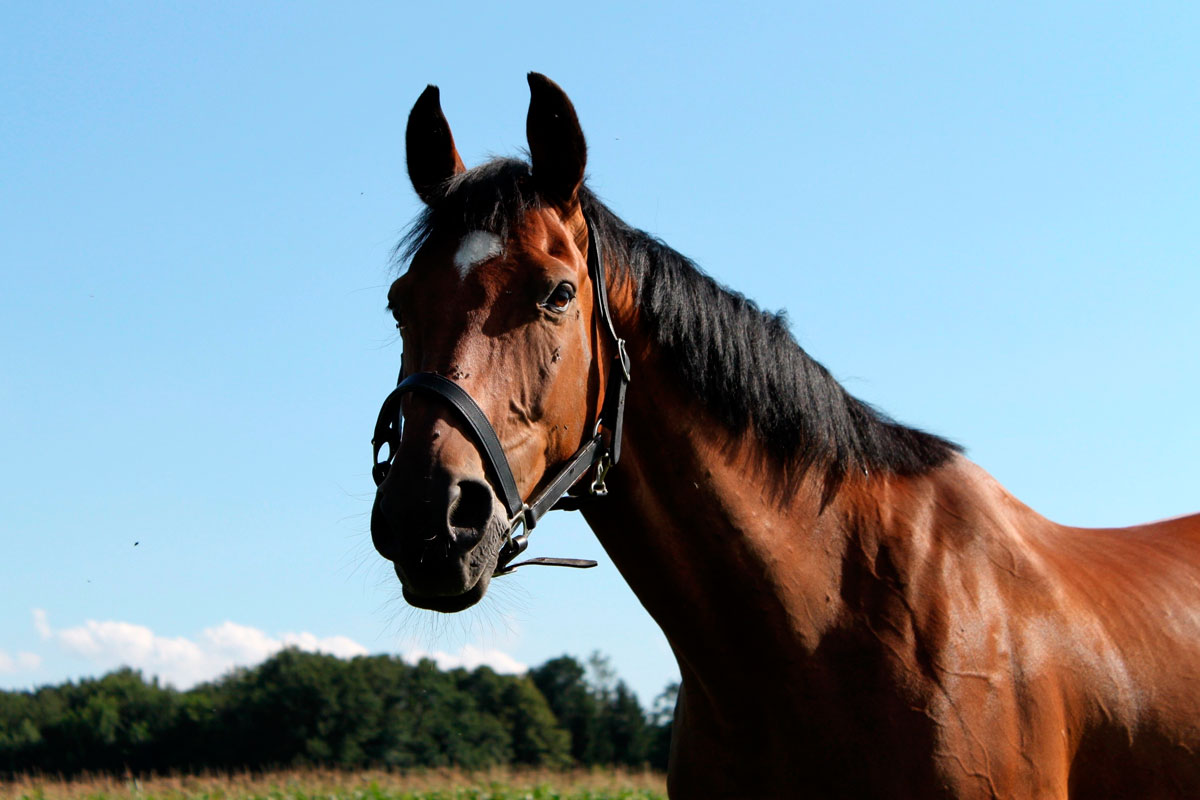
Summing up: ““A well-trained and tamed, spirited horse responds with energy, but it should be totally controlled by any rider”.
On the other hand, when talking about temperament, we are referring to hot blood horse breeds, which are:
- Ever vigilant and they react quickly to unfamiliar circumstances
- Energetic and strong with well-defined muscles
- Quick and resistant
In contrast, we have cold blood horse breeds, which are:
- Large, heavy and very muscular
- Used for heavy work and they move slowly
- They have a stolid and placid demeanour
The crossing of both breed types results in the so-called “warm-blooded” breeds.
THE APPALOOSA HORSE
These horses were developed by the Nez Perse Indians in north-western Oregon and Idaho. Unlike other tribes, these Indians used only the best stallions and mares to achieve a new breed, with the typical colours that we can see today in an Appaloosa.
These base animals were appreciated for their ability to move safely on rocky slopes, as well as for their resistance and strength. It is as if they had been created only to move around all kinds of terrain. It has a strong and compact body, and hard hooves.
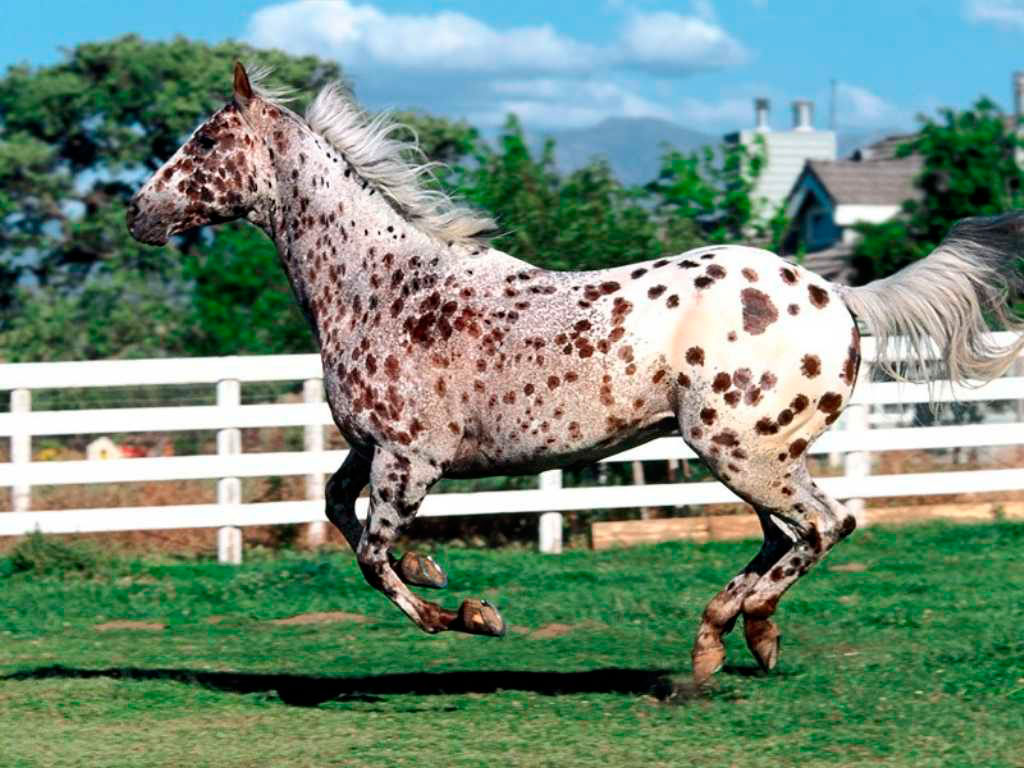
It is calm and spirited, and it can take a rider to faraway places without problems.

THE AMERICAN QUARTER HORSE OR QUARTER HORSE
The Quarter Horse is the result of the crosses that were made in the USsince colonial.
Their role varied between working farming and pulling stagecoaches. At weekends, they were used in short horse races.
We could say that the breed began to acquire its definitive characteristics with the breeding in the most important ranches of Texas, such us King Ranch, Four Sixes, Wagoner Ranch, among others.
It was there where a well-defined breed was forged, from Thoroughbred, Morgan and American Saddlebred horses.

The purpose was having a “cow horse”, with a natural instinct for working with cattle. Even in the automobile era, they were essential to handle and guide the herds.
Thanks to its powerful hindquarters, these horses are gifted with the ability to sprint and to do intricate and speedy manoeuvres like turns and stops, which are necessary for cattle working. These horses also display an extraordinary performance in short races because of such characteristics.
In 1940 a group of breeders, ranchers and other horsemen from the southwestern United States founded the American Quarter Horse Association (AQHA) to preserve the pedigrees of their “Quarter Mile” horses.
Characteristics of the Quarter Mile
- The current Quarter Mile is a horse of medium height, 1.43 to 1.60 m at the withers.
- It has an extraordinary muscled mass, with a broad chest and a good thorax.
- Its speed and ductility are based on its incredible musculature and the location of its centre of gravity, shifted a bit towards the front part as compared to other horses. That is way they are strong and resistant.
- Its head is well proportioned and with a good insertion in the neck, which is neither too thin nor thick.
- It has a calm character and can be tamed easily.
- There is a wide range of coat colours, though sorrel is the most common. Within this breed, some colours are not accepted - the albinos and the spotted colour patterns like the Appaloosa.
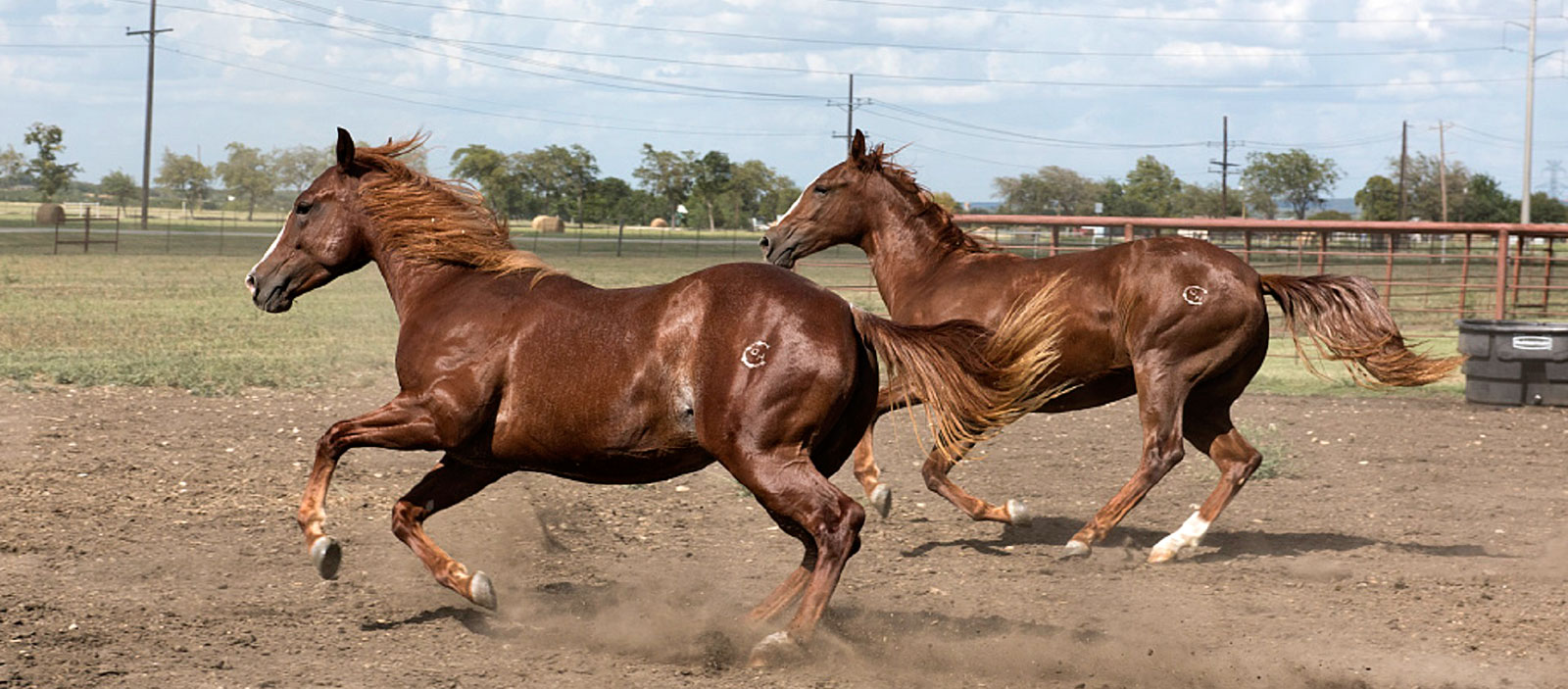
In American rodeo shows, the Quarter Mile plays a key role in cowboy competitions.
Subscribe to the Ampascachi Community and obtain benefits and exclusive content. Furthermore, we offer free advice on horses and equestrian tourism.
Breeds related to equestrian sports
THE DUTCH WARMBLOOD, THE KWPN
The KWPN or Dutch Warmblood was developed as a competition horse, as its name indicates. Today it stands out in dressage and jumping competitions.
The KWPN is the result of a breeding program that combined German, French and English horses, and some crosses with other breeds. All this crossbreeding together with the dedication and professionalism of Dutch breeders helped develop this modern sports horse, with a great performance in competition, a calm nature and a strong will to accept challenges.

Characteristics of the Dutch Warmblood
- The KWPN horse stands an average of 1.60 to 1.75 m high.
- The most common coat colours are chestnut and brown, but there are also black and white colours.
- The head is elegant with a straight profile.
- The neck is long and stooped.
- The shoulders are tilted and the chest is sunken with a lot of space for the heart.
- The front legs are strong and muscled, the hip is well set and the joints are solid.
These physical features make this horse a strong animal.
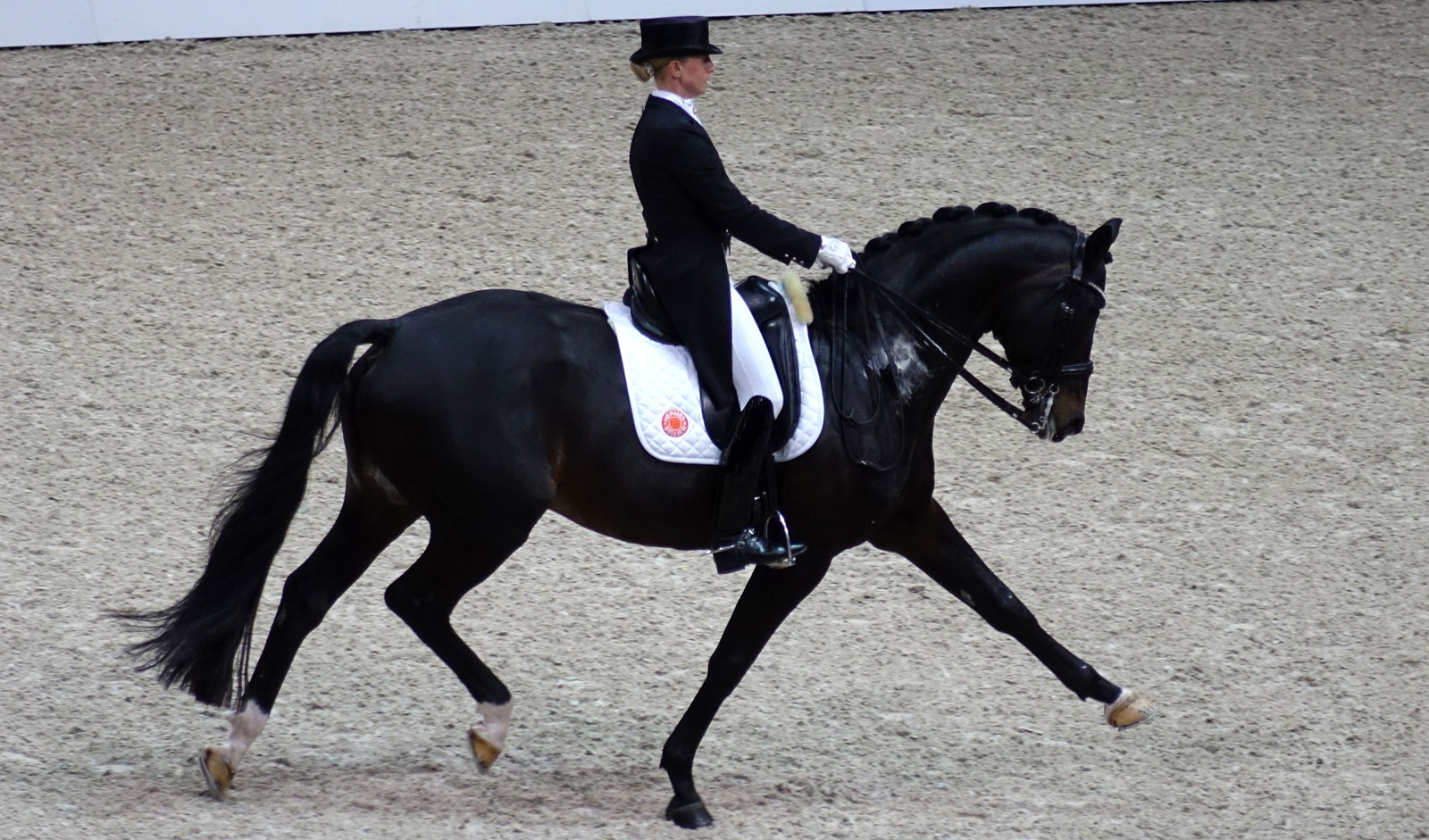
THE HANOVERIAN HORSE (HANN)
The Hanoverian horse is originally from Germany and today is one of the most popular breeds in the world, especially in equestrian sports practice.
Among his ancestors we find specimens of the Holsteiner and Thoroughbred breeds, and a native horse from the Hannover region.
After many different crosses, the result was an agile animal with an elegant gait, which is used as both a carriage and a riding horse. Its physical features made it a good working horse, too.

After the two World Wars, it was crossbred with Trakehnes and the result was a Hanoverian horse with more agility, power and freedom in its gait.
Characteristic of the Hanoverian Horse
- The breed stands an average of 1.60 to 1.70 m high.
- The neck is rather long and thin but strong.
- The body is of medium length, wide and strong with a muscular and rather flat croup.
- It has an elevated bearing and the tail is set high.
- The limbs are relatively short, which gives it a very massive aspect.
- The cannon bones are strong and their joints are large and well-marked.
- Very resistant hooves.
- The coat colours range from sorrel to black.
- This horse has a pleasant and docile mood.

THE OLDENBURG HORSE (OLDBG)
This breed was developed in Germany during the seventeenth century, with the aim of creating a horse for pulling carriages.
The main base of this breed was the Friesian horse. Over time, the breed wasimproved with blood from Napolitano, Berber, Spanish, Hanoverian and Thoroughbred horses, achieving a greater refinement for more complex uses, others than pulling carts.
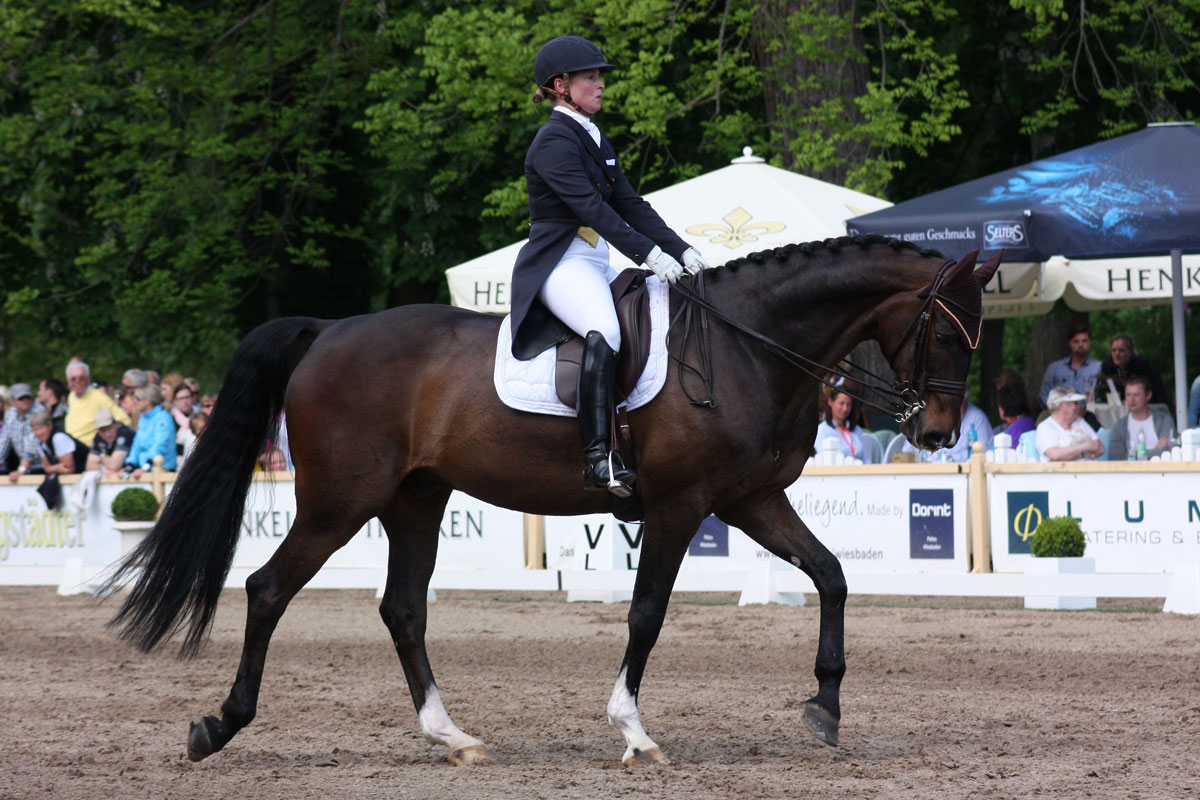
It is an animal of great physical build and, at present, it is widely used in horse jumping competitions, dressage and even in cart-pulling competitions.
Characteristics of the Oldenburg Horse
- Height at the withers 1.60 - 1.70 m.
- Main coat colours black, brown and bay.
- Very muscular chest and body.
- Strong hindquarters.
- Long and strong neck.
- Short legs and cannon bones.
- Calm nature.
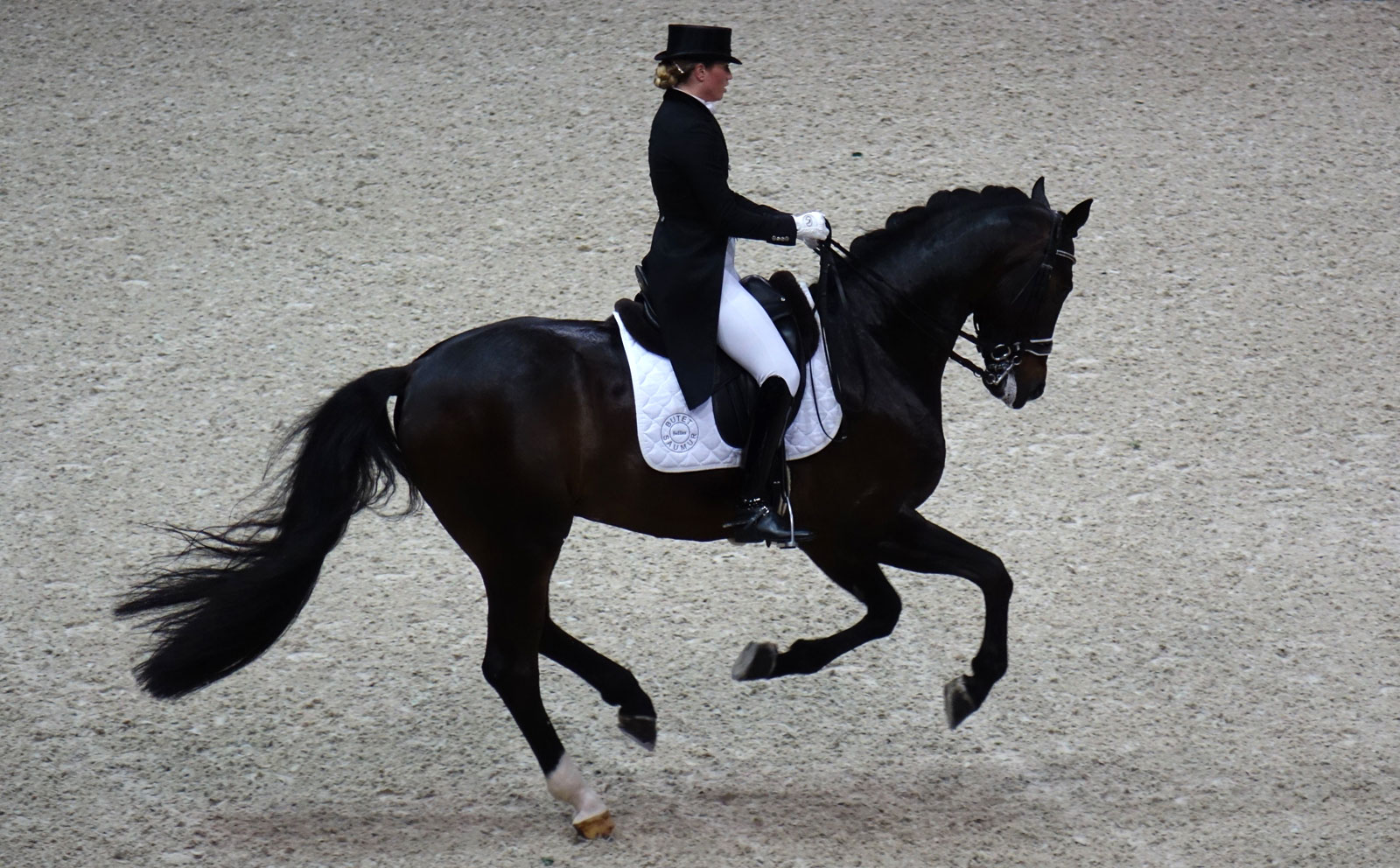
THE WESTPHALIAN HORSE (WESFT)
The Westphalian is native to the Rhineland region and is the result of basically three breeds -Thoroughbred, Arabic and Hanoverian.
In the 1970s, the moment of the rise of horsemanship in Germany, this horse stormed into the sectors of equestrian sports as a high-quality product.
Its popularity is based on its features and conformation, its ductility for both jumping and dressage events, and its great resistance. It is great at competitions and, besides, it is an excellent riding horse.

Characteristics of the Westphalian Horse
- Its height goes from 1.55 to 1.68 m.
- Large head, long straight forehead, medium-sized ears and big eyes.
- It is muscular, athletic and well-balanced, and it possesses elastic movements and a long stride.
- Long and well inserted neck, with a sloping back.
- Its back is a little longer than that of other hot-blooded horses.
- A rather sloping croup, correct and muscled limbs and big hooves.
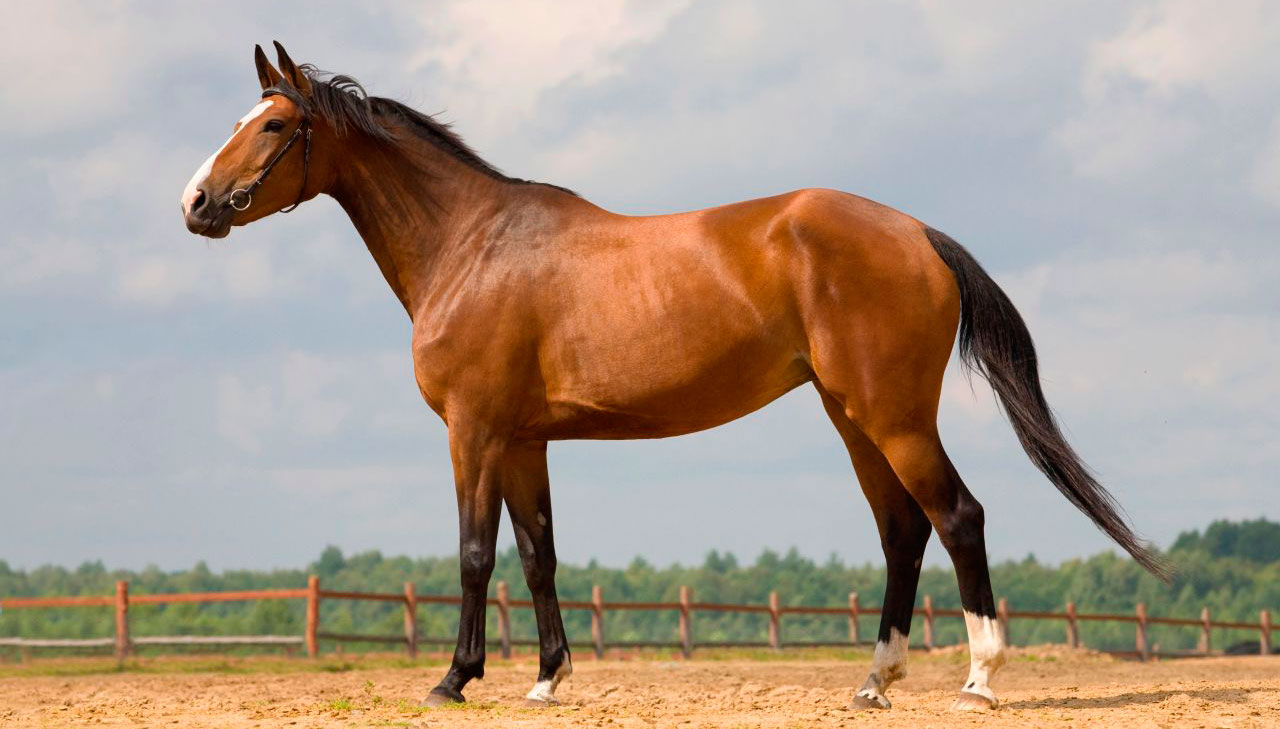
THE HOLSTEINER HORSE (HOLST)
The Holsteiner is a warm-blooded riding horse breed of Germanorigin.
Its origins date back to the thirteenth century in the province of Schleswig-Holstein. Some people consider it the oldest warm-blooded breed. For centuries, these horses have not had a specific use, so they were used for riding, pulling carts and also in agricultural work.
In fact, the breeders of these horses made crosses with different breeds, depending on the characteristics they needed, but the most frequent crosses during the first centuries were made with Spanish and Italian purebreds.
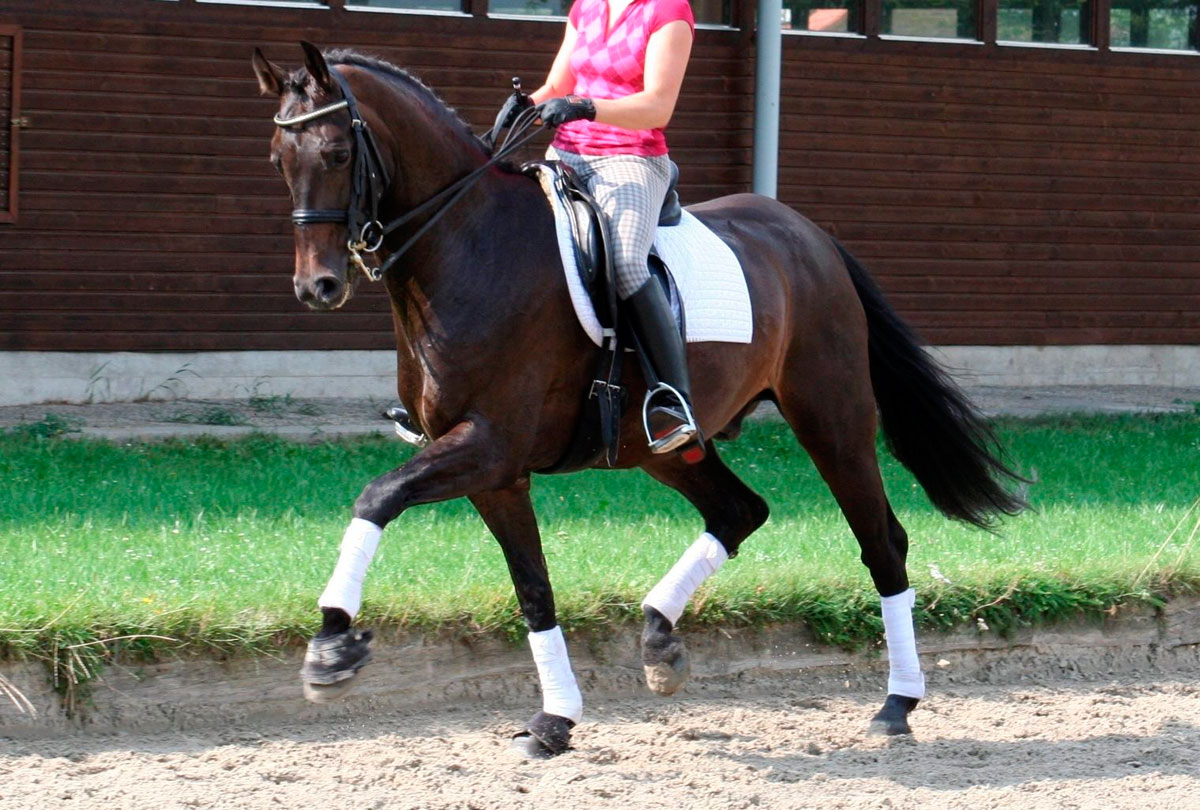
During the twentieth century, when an important change was made to the conformation of the horse’s body, horses became more agile and were used, almost exclusively, for sporting purposes.
The bases of the current breed began to be set as from 1961. The breed is mainly devoted to competition, especially jumping and although its population is not as numerous as in other breeds (no more than 6%), proportionally, many of them are champions.
They are also found at the top levels of dressage, combined driving, show hunters and eventing.
In order to obtain these good general results in competitions, crossbreeding with Arab and Trakehner horses were decisive.
Characteristics of the Holsteiner Horse
- Height at the withers 1.60 - 1.73 m.
- The neck is strong and well connected.
- Its chest is broad and well expanded.
- It has a broad stride with very good cadence.
- The most popular coat colours are black, chestnut or dark brown, although sorrel and grey can also be found.
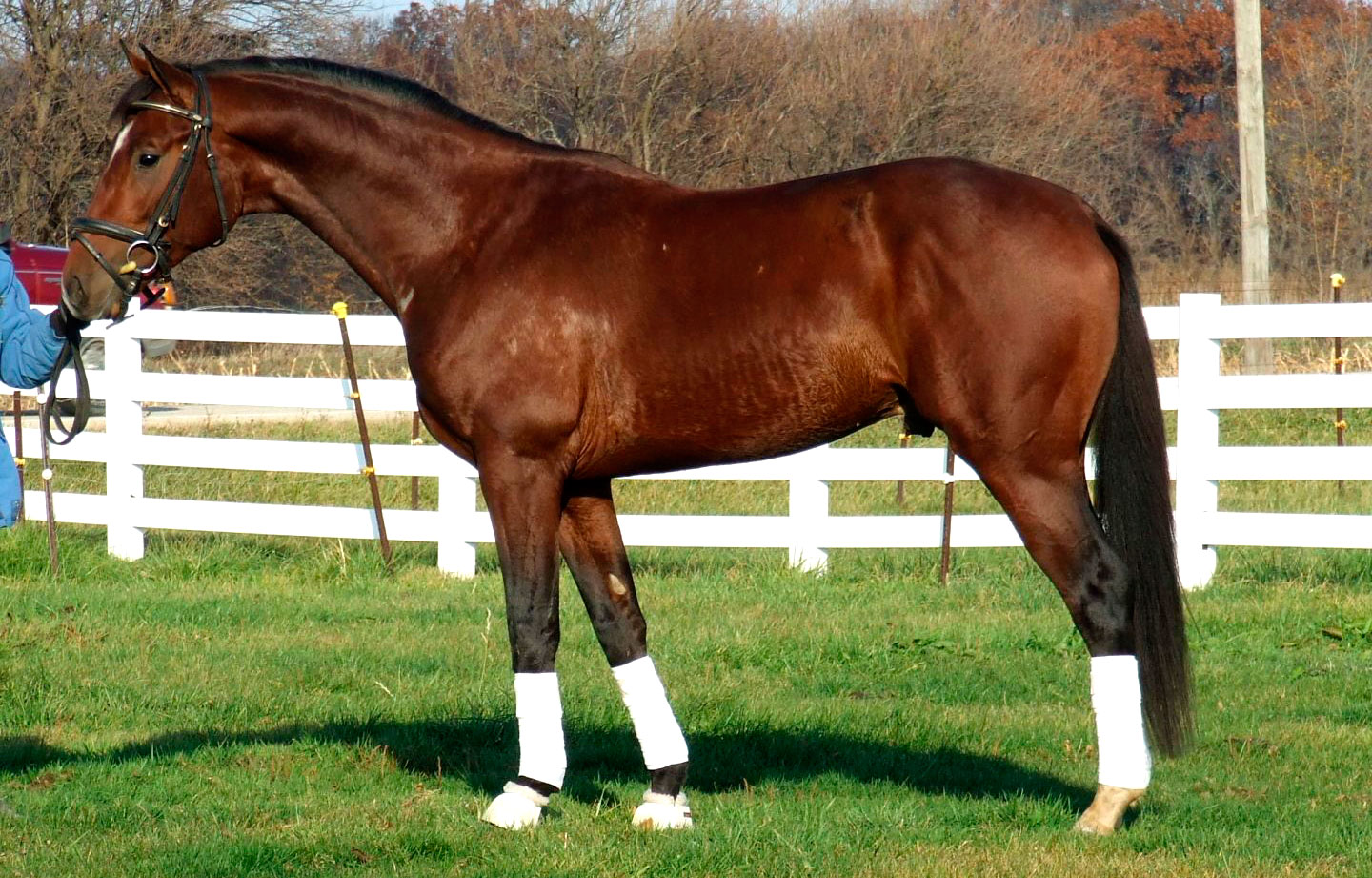
THE PURE SPANISH HORSE (PRE)
The Pure Spanish horse was called that way as from 1912, but historically and internationally, it has been known as the Andalusian horse.
They appeared before the Roman Empire. There are records of its presence in the areas of what is now Spain. Roman authors such as Plutarco, Plinio and Seneca spoke of a horse from Hispania.
Referring to a beautiful and arrogant animal, ideal for war, as for the games that were practiced at the time.
The King Felipe II ordered the creation and systematization of the Royal Stables of Cordoba, in the region of Andalusia, Here he grouped the best stallions and mares of the surrounding provinces bordering the Guadalquivir River, which were the most prolific ones as regards horse breeding.
This is how the “royal horses” ” were born and, long after, they were known as the “national horse”.
The first selection of stallions and mares was made with the best specimens found in the region, horses which were already known as Andalusian or Cordoba horses, the same horse that was already mentioned by the Roman authors.
From them, without adding any crosses with breeds brought from other places, they were improved through an adequate selection.
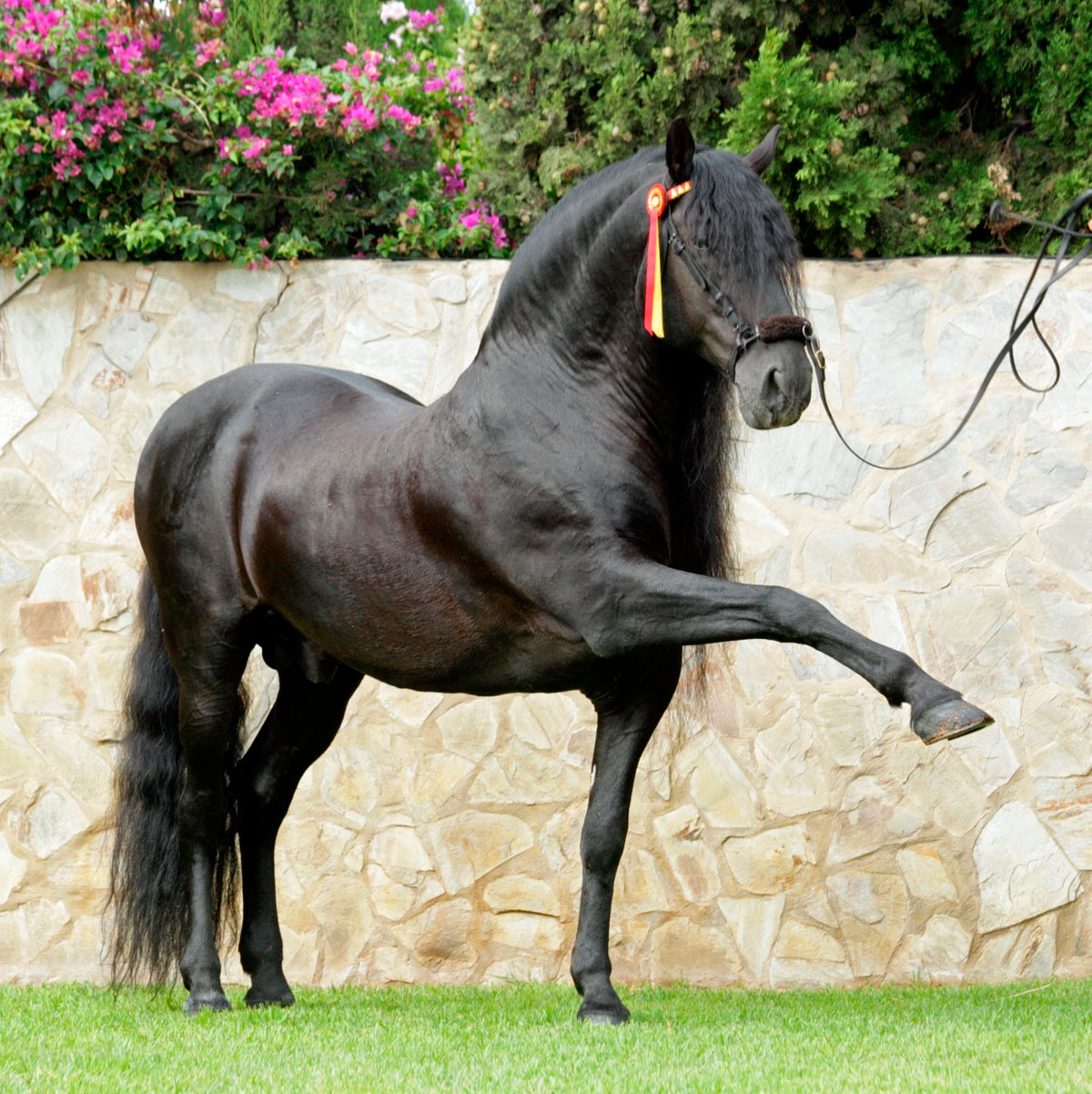
The Pure Spanish horse is the heir to that blood and of that systematic selection, made in the Royal Stables of Cordoba. A horse that is balanced between the beauty of Renaissance art and the improvement of the Golden Age.
Is one of the most appreciated horses because it is well-balanced, because it is good for everything.
Its beauty and brio are the result of keeping the blood pure, without crossbreeding and improving the genetic quality in each generation. This breed played an important role in creating several different breeds of Central Europe and America.
Characteristics of the Pure Spanish Horse
It has a great versatility, which results from the harmony of its forms, its spirit and resistance. It has an extraordinary performance in sports, especially dressage, and it makes an excellent riding horse.
- Its height is 155-162 cm approximately.
- The head is well proportioned, of medium length and its profile goes from sub convex to straight. The ears are medium-sized. The forehead is slightly domed. Bright, triangular eyes and expressive look.
- The neck is medium-sized, slightly arched and muscled, well inserted in the head and the in the trunk. Abundant and silky mane.
- The trunk is proportionate and robust, with a discretely wide and prominent withers and a consistent and muscular back. The back should be wide, short, muscled, somewhat arched and well attached to the croup.
- The croup has medium length and width. It is rounded and slightly sloping. The tail is set low.
- Front limbs - long, muscled, oblique and elastic back. Strong leg with good inclination. Cannon bones of medium length. Well-developed and lean knee.
- The rear limbs have muscled thighs. The buttocks are slightly arched and muscled, and legs are long.
- Hard and compact hooves.
- The movements are agile, elevated, extended, harmonic and cadenced. Special predisposition for advanced collection and turns on the haunches.
- The PRE is a balanced and resistant horse, energetic, and it can adapt easily to different services and situations.

THE TRAKEHNER HORSE (TRAK)
The origin of the Trakehner is located in the east of ancient Prussia (border region between Lithuania and Poland).
In the 17th century, Frederick I of Prussia chose the best studs of Schweiken to start a breeding selection in order to create a military breed of horses.
In the 19th century, the Arab horse and the Turkmen horse helped refine the breed and today the Trakehner is a resistant, powerful, athletic and elegant horse.
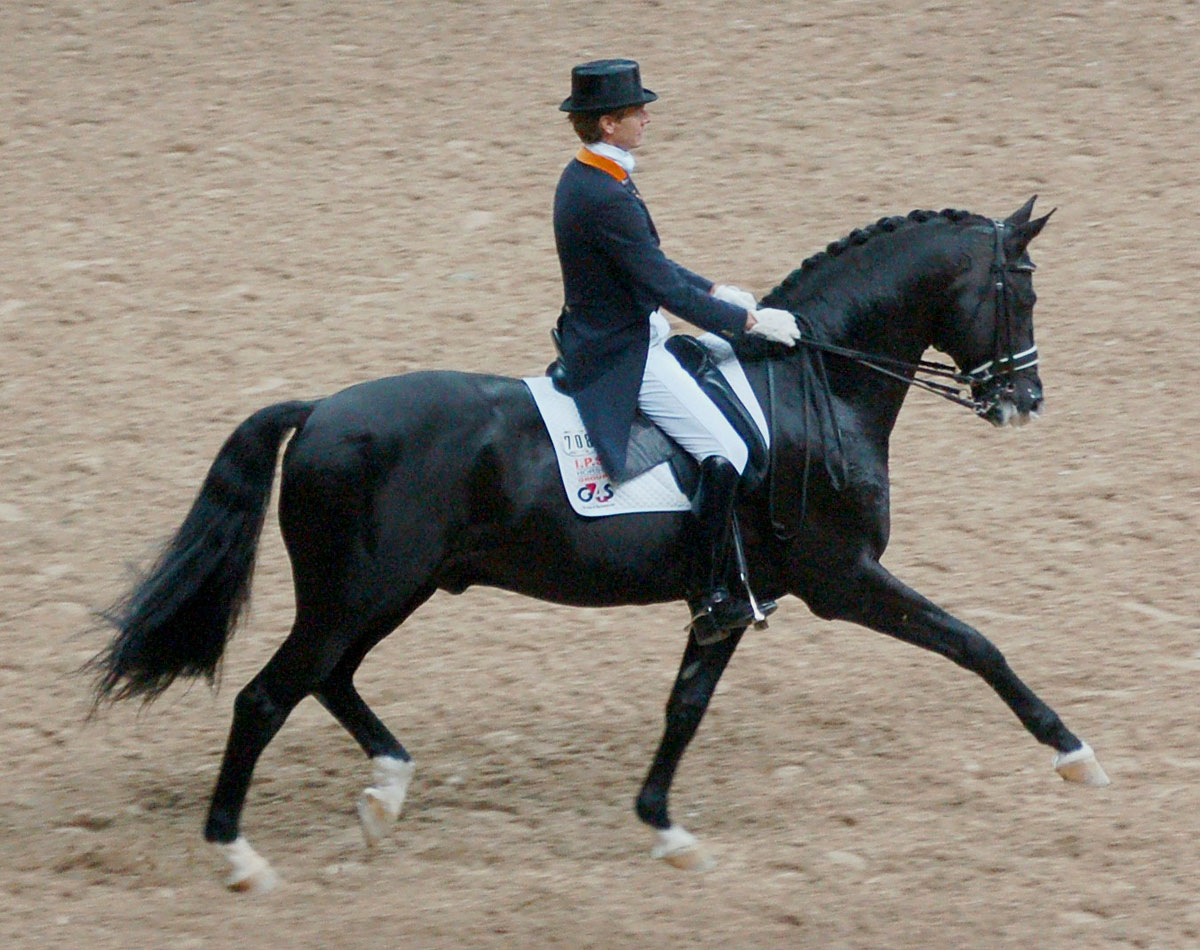
It possesses great energy and vitality, unusual for a warm-blooded horse, sit looks more like a Purebred, with a very pure pedigree that makes it suitable to improve other breeds.
Characteristics of Trakehner Horse
- Height at the withers between 1.60 and 1.75 m.
- Powerful body, wide and deep thorax, and long and muscled croup.
- Long neck that ends in a wide forehead, with very expressive eyes.
- Its limbs are thin but very powerful.
- Very hard hooves.
- Its main coat colours are grey, sorrel, bay and black.
- It is a very fast and strong horse.
- It can be said that it is mainly an athletic and energetic horse.
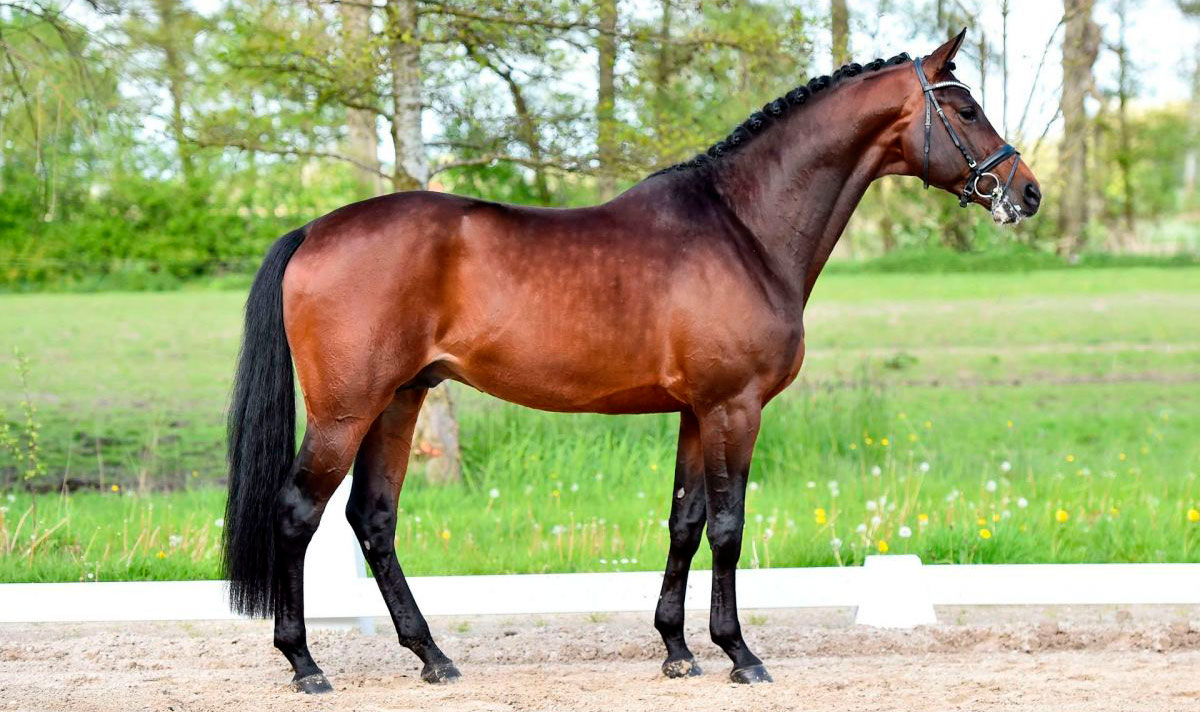
THE SELLE FRANCAIS HORSE
Originally from France, this horse was bred mainly for sports. Although it is a very young breed - in Europe, it was accepted as such in 1970 – its ancestors were crossbred with Purebreds, Hunter or Anglo Norman horses.
The most common crosses to improve the breed are:
- Anglo Arabian with the French Trotter
- Thoroughbred with the French Trotter
- Purebred with the Anglo Arabian
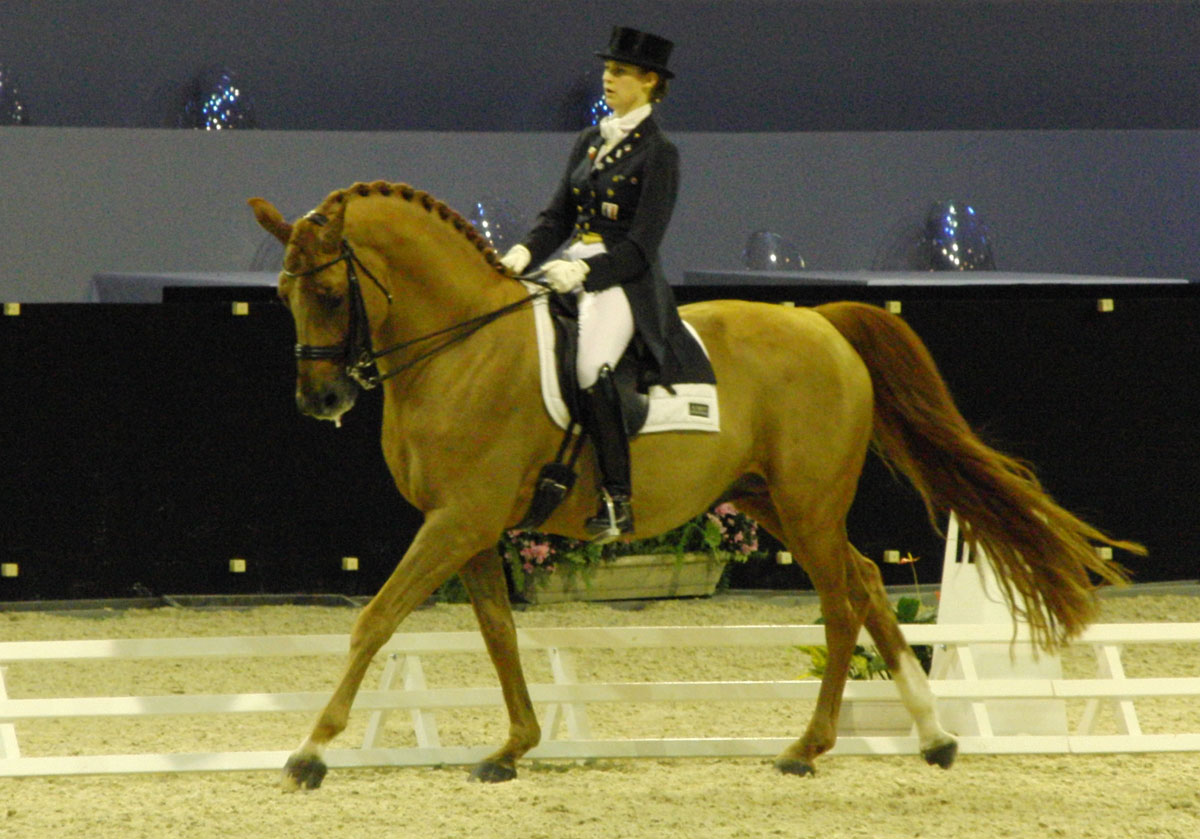
Although the first stallions arrived in the 18th century (Le Pin year 1730), it was not until after World War II that the breeding of this horse.
Was characterised by having specimens endowed with great skill, spirit, endurance and speed and they are specialists in jumping events.
Characteristics of the Selle Francais Horse
- Height at the withers 1.60 - 1.75 m.
- A lot of power.
- Strong, resistant and well-muscled limbs, especially the hindquarters, which are broad and well-proportioned, which is good for jumping.
- The main coat colours are bay and sorrel, although all coat types are accepted.

Would you like to go in depth into the world of horse training?
Download our free guide on horse training step by step, where we tell you everything we have learned about horse training in more than 25 years of experience.
Planning your horse riding holidays?
Join the Ampascachi Community. You will get exclusive advantages and guidance for your next horse riding holiday.


 German
German French
French Spanish
Spanish